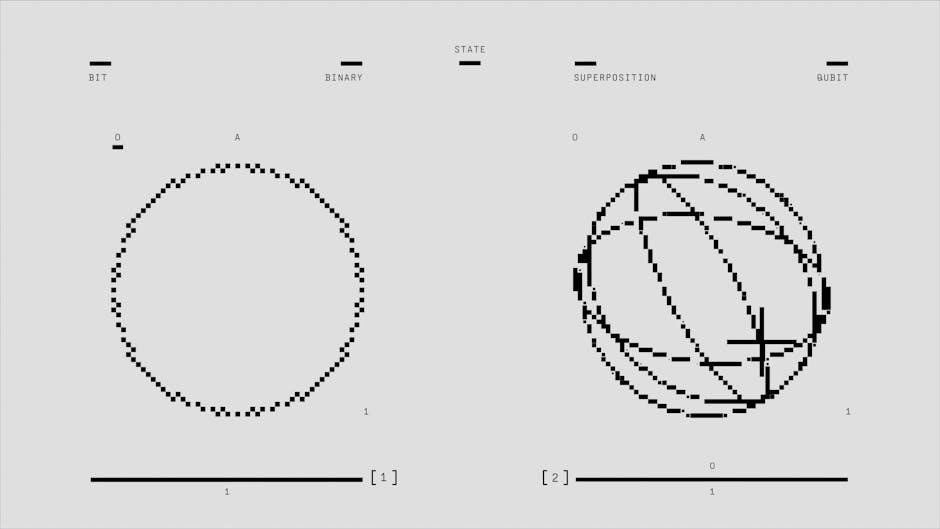California Car Seat Laws: Age and Weight Guide
Navigating California’s car seat regulations requires careful consideration of both age and physical dimensions. The primary goal is to ensure children’s safety while traveling in vehicles. Understanding the specific requirements based on a child’s age, weight, and height is paramount for compliance.
California’s commitment to child passenger safety is reflected in its comprehensive car seat laws. These laws mandate that children be properly restrained in a car seat or booster seat until they reach a specific age or height. The regulations are designed to minimize the risk of injury in the event of a car accident. Staying informed about these laws is crucial for all parents and caregivers in California.
The legal framework considers both age and physical development, recognizing that children grow at different rates. Therefore, the laws specify age-based requirements alongside weight and height thresholds. This dual approach ensures that children are secured in the most appropriate restraint system for their individual needs. Regular updates to these laws reflect ongoing research and best practices in child safety.
Compliance with California’s car seat laws is not only a legal obligation but also a vital step in protecting children. Understanding the nuances of these regulations empowers parents to make informed decisions about car seat selection and usage. Failure to adhere to these laws can result in penalties and, more importantly, put children at unnecessary risk.

Understanding Age Requirements
California law specifies different car seat requirements based on a child’s age. These regulations aim to protect children as they grow. Understanding these age-related rules is crucial for ensuring child passenger safety and legal compliance within the state.
Children Under 2 Years Old: Rear-Facing Requirement
California law mandates that children under two years of age must ride in a rear-facing car seat. This is a critical safety measure designed to protect infants and toddlers in the event of a collision. Rear-facing car seats provide superior protection for the child’s head, neck, and spine, which are particularly vulnerable at this young age. This requirement is in effect unless the child reaches a significant milestone in either weight or height.
Specifically, the law allows for an exception if the child weighs 40 pounds or more, or if they are 40 inches tall or more. If a child meets either of these criteria before their second birthday, they are legally permitted to transition to a forward-facing car seat. However, it’s generally recommended to keep children rear-facing for as long as possible, as it offers the best protection. This law, effective January 1, 2017, underscores the importance of prioritizing child passenger safety through evidence-based practices.
Children Ages 2-8: Car Seat or Booster Seat
California law stipulates that children between the ages of 2 and 8 must be properly secured in a car seat or booster seat while riding in a vehicle. This requirement is in place to ensure that young children are adequately protected in the event of a car accident. The specific type of car seat or booster seat needed depends on the child’s height and weight, as well as the manufacturer’s recommendations for the particular seat.
Children in this age group must remain in a car seat or booster seat until they reach a height of 4 feet 9 inches (49 inches). Once a child reaches this height, they may transition to using a standard seat belt, provided that the seat belt fits them properly. This means the lap belt should lie low across the hips and upper thighs, and the shoulder belt should fit snugly across the shoulder and chest, not the neck or face. Ensuring proper fit is crucial for the seat belt to provide adequate protection.
Children Ages 8 and Older: Seat Belt Use
Once a child in California reaches the age of 8 years old, or achieves a height of 4 feet 9 inches (49 inches), they are generally permitted to use a standard vehicle seat belt. However, it is crucial to ensure that the seat belt fits properly to provide adequate protection in the event of a collision. A properly fitted seat belt should lie low across the child’s hips and upper thighs, and the shoulder belt should fit snugly across the shoulder and chest, avoiding the neck and face.
If the seat belt does not fit correctly, it is recommended that the child continue using a booster seat until they grow tall enough for the seat belt to fit properly. The safety of the child should always be the primary consideration. Even though the law allows for seat belt use at age 8 or 4’9″, using a booster seat beyond that age if needed is best. Parents and caregivers are responsible for ensuring children’s safety.

Understanding Weight and Height Requirements
California car seat laws consider weight and height alongside age. These factors determine the appropriate car seat or booster seat. Meeting minimum requirements ensures optimal safety and legal compliance for child passengers.
Minimum Weight and Height for Forward-Facing Seats
Transitioning a child to a forward-facing car seat in California hinges on meeting specific weight and height criteria. While age plays a role, the child’s physical development is paramount. Before switching from rear-facing, ensure your child exceeds the minimum weight limit specified by the car seat manufacturer, often around 40 pounds.
Height is equally crucial. The child should meet the minimum height requirement for the forward-facing seat, ensuring the harness straps fit correctly. These straps should be at or above the child’s shoulders when used in the forward-facing position. Consulting the car seat’s manual is essential to verify these specific limits.
Remember, rushing into forward-facing before a child is ready can compromise their safety. Extended rear-facing is generally recommended for as long as possible, up to the car seat’s maximum weight and height limits. Always prioritize safety over convenience when making this transition. Meeting both the weight and height requirements simultaneously is essential for legal compliance and, most importantly, your child’s well-being.
Weight and Height Exceptions for Rear-Facing Seats
California law mandates that children under two years old must ride in a rear-facing car seat. However, exceptions exist based on a child’s weight and height. If a child under two weighs 40 pounds or more, or measures 40 inches or taller, they are legally permitted to transition to a forward-facing car seat, even before reaching the age of two.
These exceptions recognize that some children may outgrow the rear-facing position before their second birthday. It’s crucial to understand that these are exceptions, not recommendations. Safety experts strongly advise keeping children rear-facing as long as possible, up to the maximum weight and height limits of their car seat.
Even if a child meets the exception criteria, parents should carefully consider whether the child is truly ready for forward-facing. A larger or taller child might still benefit from the increased protection offered by rear-facing. Always prioritize safety and consult with a certified child passenger safety technician for personalized guidance when considering these exceptions. Remember to meticulously follow the car seat manufacturer’s instructions.
When to Transition to a Booster Seat
Determining when a child is ready to transition from a car seat to a booster seat involves considering both California law and the child’s physical development. The legal requirement in California states that children must be in a car seat or booster seat until they are at least 8 years old OR 4’9″ (49 inches) tall.
However, simply meeting the minimum age or height requirement doesn’t automatically mean a child is ready for a booster. A child should only move to a booster seat when they have outgrown their forward-facing car seat, specifically when they reach the maximum weight or height limit specified by the car seat manufacturer.
Beyond the legal stipulations and car seat limits, several developmental factors indicate readiness. The child must be able to sit properly in the booster seat for the entire ride without slouching, fidgeting excessively, or playing with the seat belt. The seat belt should fit correctly, lying low across the hips and touching the upper thighs, with the shoulder belt crossing the chest and shoulder. If the seat belt doesn’t fit properly, the child is not ready for a booster seat, even if they meet the age and height requirements.

Rear-Facing Car Seat Safety
Prioritizing rear-facing car seats for as long as possible significantly enhances child safety. Keeping children rear-facing until they reach the car seat’s height and weight limits offers superior protection in the event of a crash.
Benefits of Extended Rear-Facing
Extended rear-facing offers significant safety advantages for young children in the event of a car crash. When a child is rear-facing, the force of the impact is distributed across the entire back of the car seat. This helps to protect the child’s head, neck, and spine, which are particularly vulnerable in infants and toddlers. Studies have shown that rear-facing car seats are significantly more effective at preventing serious injuries compared to forward-facing seats for children in this age group.
The skeletal structure of young children is still developing, making them more susceptible to injury. The rear-facing position provides crucial support and cushioning, minimizing the risk of whiplash and other trauma. Keeping a child rear-facing until they reach the maximum height and weight limits of their car seat, as recommended by safety experts, offers the best possible protection.
Furthermore, modern car seats are designed to accommodate extended rear-facing, with higher weight and height limits than older models. This allows parents to keep their children rear-facing for a longer period without compromising comfort or safety. Always consult the car seat manufacturer’s instructions for specific guidelines on weight and height limits.

Penalties for Non-Compliance
California law mandates strict adherence to child passenger safety regulations, and failure to comply can result in significant penalties. Law enforcement officers are authorized to issue citations to drivers who do not properly secure children in appropriate car seats or booster seats according to their age, weight, and height. These penalties are designed to deter non-compliance and reinforce the importance of child safety.
The fines for violating California’s car seat laws can vary, but typically include a base fine plus additional court fees and assessments. The exact amount depends on the specific violation and the jurisdiction where the citation is issued. Furthermore, points may be added to the driver’s DMV record, potentially leading to increased insurance rates or even license suspension for repeat offenders.
Beyond the financial repercussions, non-compliance with car seat laws can have far more severe consequences in the event of a crash. Children who are not properly restrained are at a significantly higher risk of serious injury or death. Therefore, understanding and following California’s car seat laws is not only a legal obligation but also a crucial responsibility for ensuring the safety and well-being of young passengers. Prioritizing child passenger safety through proper car seat use is paramount.















